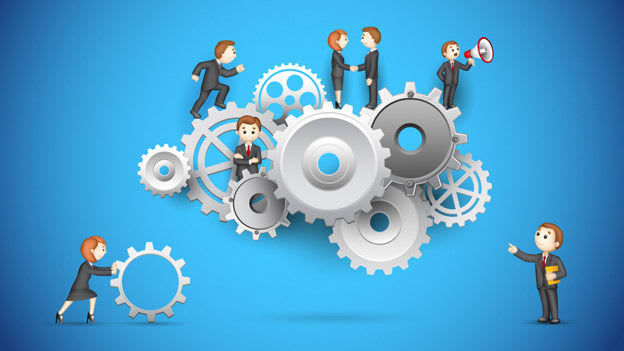How technology has taken over HR in the past year and trends to expect in 2022

The pandemic put to test the level of preparedness of organizations to adapt to a transformed workplace by putting their people at the heart of HR policies. For HR leaders, the seismic shift resulting from COVID-19 presented a unique opportunity to be more proactive and rethink work models by leveraging technology to facilitate disruptions at work.
The past year witnessed the dramatic evolution of the human resources function across organisations, in response to the demands of the “New Normal of Work”. In my view, the emergence of the hybrid work culture that became the new norm in 2021, will continue even after the dust settles on the pandemic. Undoubtedly, technology was the key driver that enabled employees to collaborate seamlessly with their remote teams—without derailing productivity—to build a flexible workplace that would be resilient in the face of future adversity. This was largely possible due to employee-friendly remote collaboration platforms, such as Zoom, Microsoft Teams and Google Meet, among others.
As organisations the world-over prepare for the “Next Normal of Work” in 2022, it is evident that HR technologies, tools and policies are merging to drive efficient employee experiences. The emergence of people analytics in HR has presented a significant opportunity for organisations to take strategic business decisions, keeping their human capital in mind.
Here’s my pick of the key HR tech trends that will shape 2022:
How AI improves employee engagement in a diverse workforce
Managing the generational diversity—from Baby Boomers to Gen-Z—in the workplace is a unique challenge faced by today’s HR professionals. Artificial Intelligence (AI) and Machine Learning (ML) are increasingly driving employee engagement through automated, insights-driven processes. One of the most useful applications of AI in human resources lies in its ability to gauge employee sentiments through data. Natural Language Processing (NLP) is leveraged to identify friction areas, human emotions, conflict resolution and behaviour trends among the workforce. Thus, these Industry 4.0 technologies reduce discrimination and enhance equity in a generationally diverse workforce.
How predictive analytics measures employee flight risk
A whole array of predictive analytics tools in HR has sprung up that alerts managers when employees are preparing to quit the organisation voluntarily. Such tools run algorithms to gather critical employee data that identify potential flight risks, especially among high-performing employees. The technology enables recruiters to save time and money to predict future employee turnover based on factors such as employee engagement levels, compensation, demographics and performance, among other data insights.
How chatbots are enabling the hiring strategy
Humanlike chatbots leverage AI-based algorithms to effectively assist HR departments in the initial employee onboarding process. They are proving invaluable in aiding HR managers in screening candidates during the preliminary interview rounds, training new hires in the company protocols and even mentoring them in their career development. HR chatbots have the ability to identify the right talent for organisations as they process complex data and strengthen traditional hiring programs.
How Voice of Employee (VoE) tool promotes a positive work culture
Hiring managers are increasingly using multiple Voice of Employee (VoE) survey tools to measure employee engagement and drive actionable insights to support the workforce. Customised surveys receive anonymous feedback from employees, ensuring their voice is heard within the organisation. The technology also allows managers to redress employee grievances and benchmark the data to make it a transparent process.
How competency mapping identifies the right skills and talents
Organisations are building a competency framework to map employee talent and address skill gaps among the workforce. Automated competency mapping software and tools allow HR leaders to identify suitable skill sets to develop a competitive advantage in the industry. This also allows them to assess the kind of skills employees need to grow in their career path. Such tools usher in best recruitment practices that would optimise productivity and create meaningful learning outcomes for employees.
How HR mobile apps empower employees
In the current work from home and hybrid work models, employees are more dependent than ever on mobile apps to stay connected with their workplace. They need access to transparent and smart HR solutions, such as leave requests and medical benefits, to make faster decisions, and feel safe and empowered. Forward-looking organisations deploy data-driven apps to give them access to the right insights, thus, boosting employee morale.
How talent intelligence tools identify workforce potential
Managing talents is one of the key responsibilities of the HR department. It is imperative for organisations to build a focused talent strategy that will attract new talents into the organisation while reducing turnover. Big data harnesses key people-centric insights to assist HR professionals make strategic hiring decisions and work on reducing employee turnover in the long run.
How AI facilitates agile career mobility for employees
Today’s workforce relies on automated processes to facilitate a smooth career mobility strategy. AI-driven career pathing would allow HR managers to spot skill trends and expand their internal talent base to enable agile data-driven processes.
The global HR market is rapidly evolving, especially to adapt to the unique needs of the pandemic. The aforementioned people analytics tools provide HR leaders valuable insights on areas such as diversity, pay equity, sustainability, tenure, and retention, among others.
As the world prepares to welcome 2022, I believe organisations that put people first, are the ones that will survive and thrive.
















